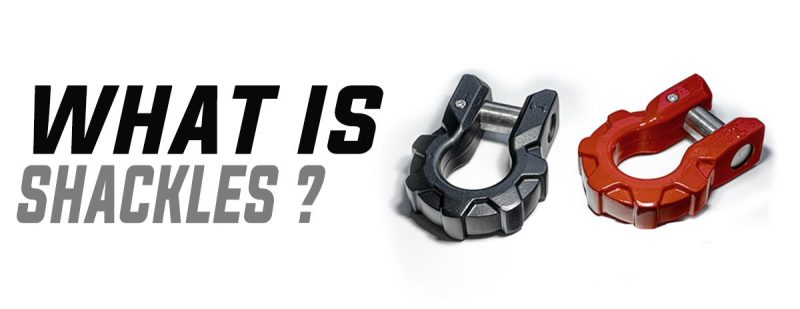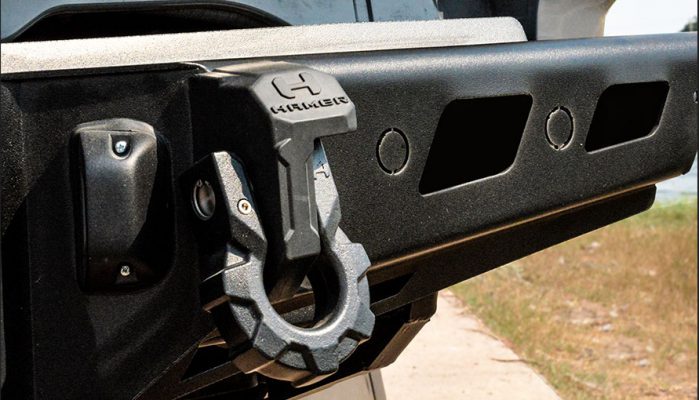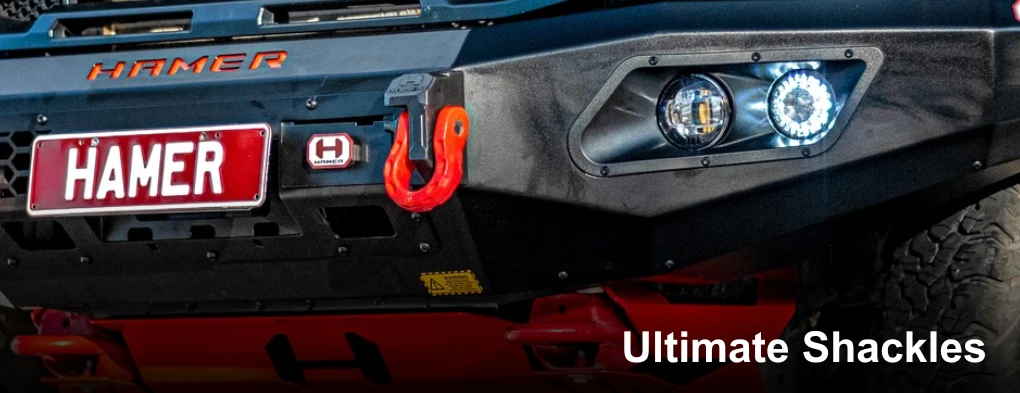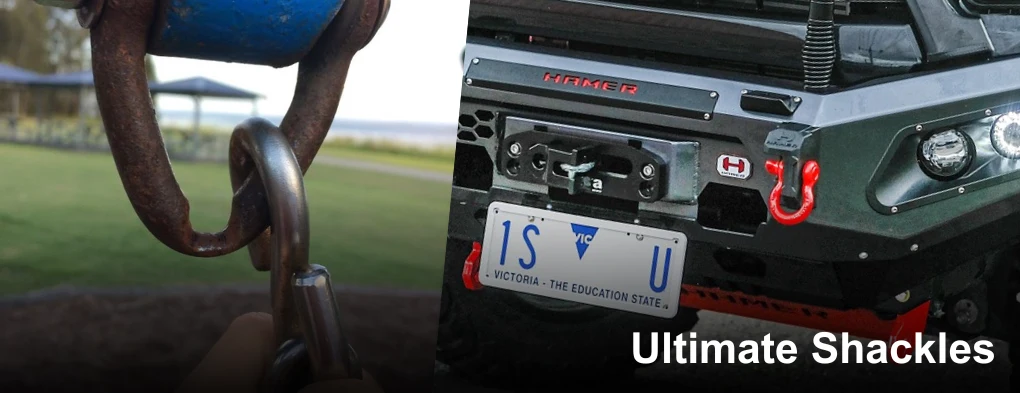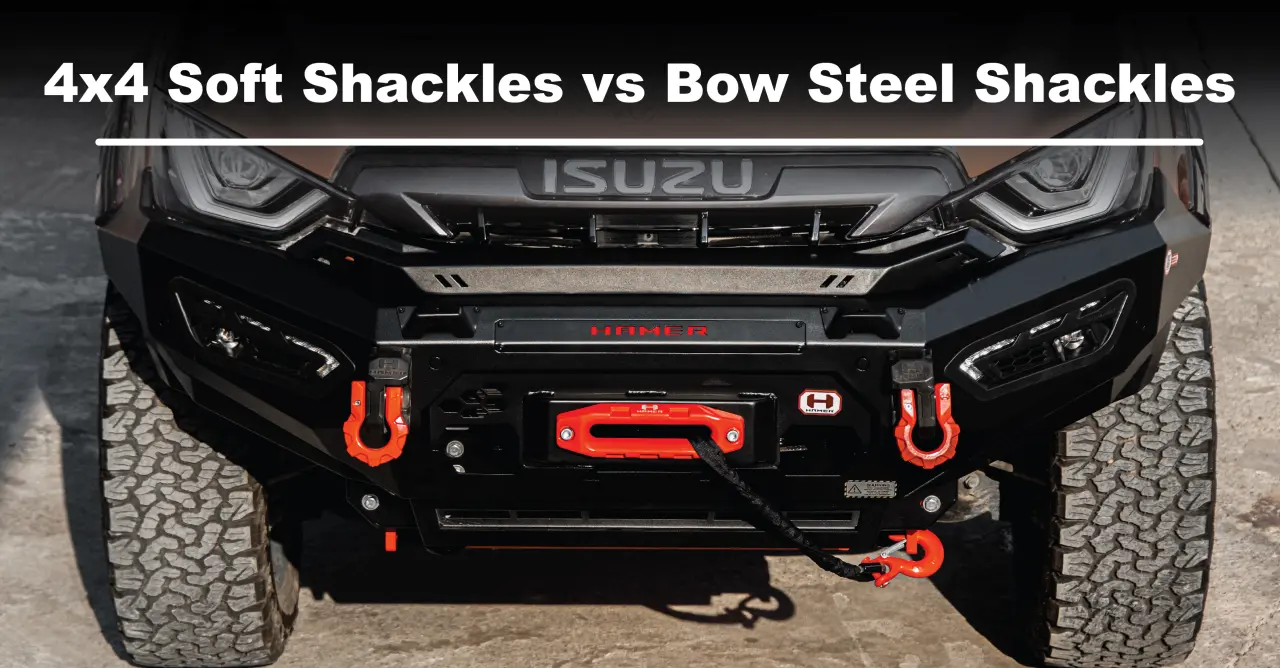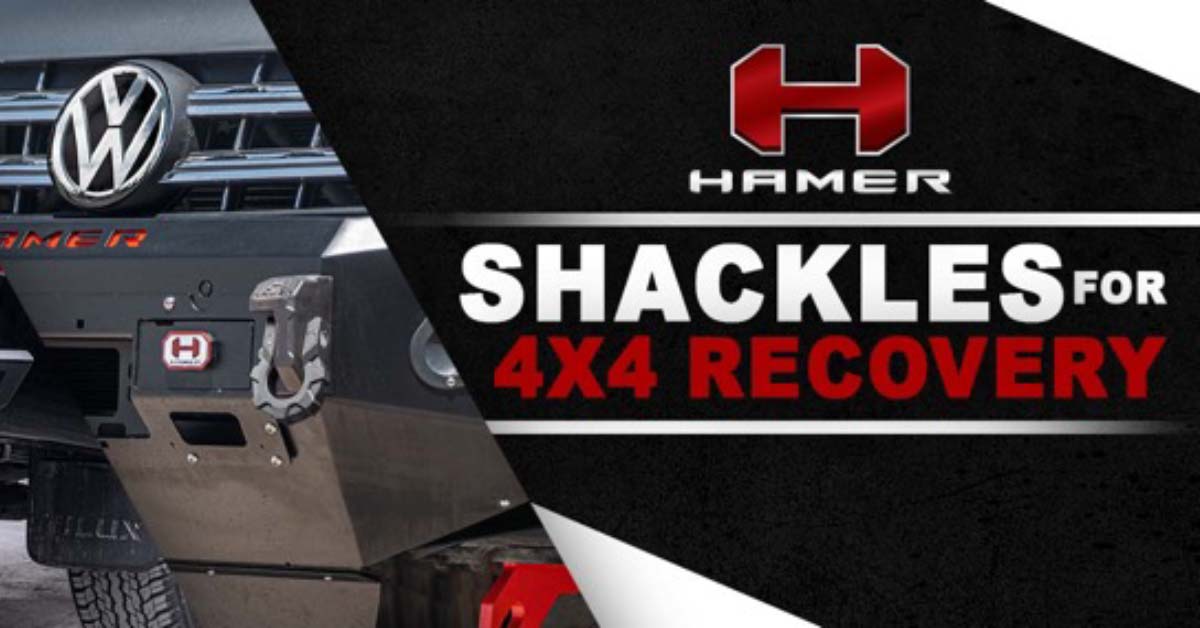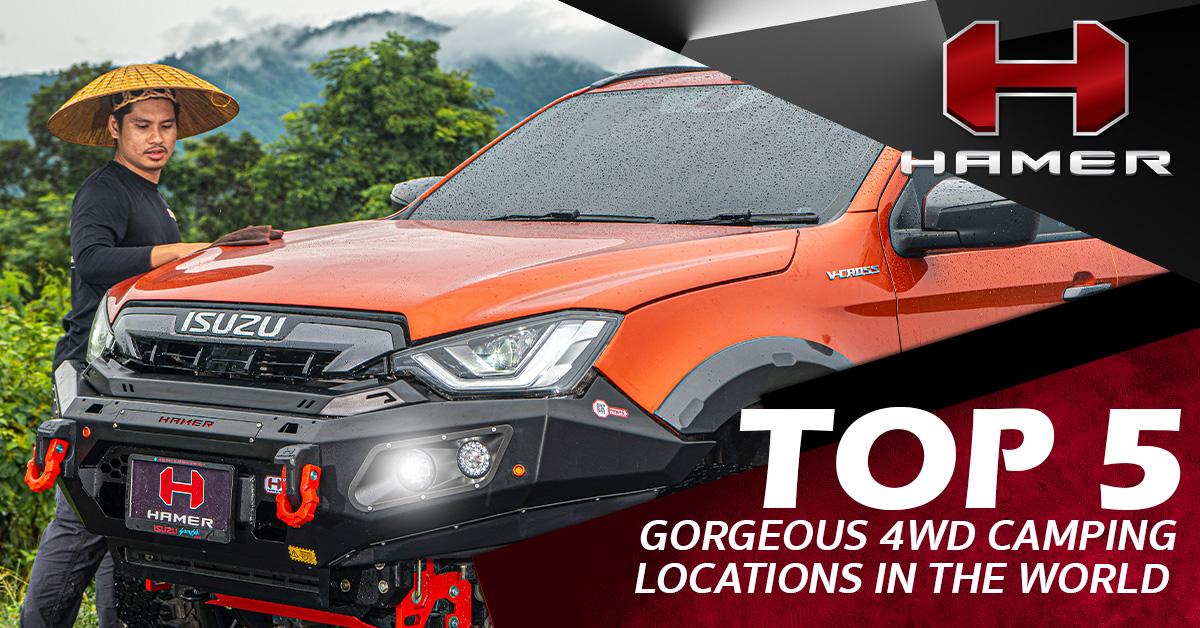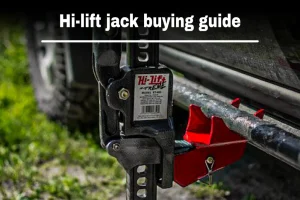NEWS & ACTIVITY
How To Safely Use Shackles
Try to clean Shackles are a must-have tool in the world of off-roading. Although simplistic in design, shackles provide a crucial job. They come in various shapes and sizes; however, when it comes to safety, there is a right way and a wrong way to use them.
Recovering a stuck vehicle can be extremely dangerous if not done correctly. Manufacturers take this inherent danger very seriously; a reputable quality brand makes rigorous tests to meet safety standards and regulations before their products are available on the market.
However, manufacturers can not be held responsible for user error; it is up to you to follow safety guidelines and to arm yourself with the proper knowledge of how to use a shackle correctly.
It’s important to understand that not all recoveries will be the same; each recovery will almost always have unique obstacles and challenges. An experienced off-roader will undoubtedly tell you there is no such thing as an easy recovery.
What Is A Shackle?
Shackles are arguably the most essential tool in your off-road recovery kit. Having a proper shackle for the correct application is crucial to safely tow, pull, and recover, a stuck vehicle.
A shackle is a specially made connector with a quick-release mechanism in the form of a pin or a soft shackle made from incredibly strong fibers.
Shackle have many types to use in the different jobs;
-
D-shackle.
-
Bow shackle.
-
Headboard shackle.
-
Pin shackle.
-
Snap shackle.
-
Threaded shackle.
-
Twist shackle.
-
Soft shackle.
No matter what type of shackle you intend on using, it is imperative to know how to use them correctly.
Safety Steps When Using Shackles
Step 1: Secure Hitch Receiver
Whether you are connecting the shackle via a hitch receiver or a rated recovery point, before connecting the shackle, If using a hitch, make sure that the hitch is securely fastened using the retaining pin.
The retaining pin keeps the hitch pin from coming loose, ensuring that the shackle block stays in place. Failure to put the retaining pin on may result in injury!
Step 2 : Unscrew the Pin
Before connecting the shackle with wire rope, unscrew the pin to prepare it for attachment.
Step 3 : Align the Snatch Strap
Insert the snatch strap onto the bow of the shackle. It’s crucial to make sure that the strap is parallel to the bow of the shackle; uneven placement can cause excessive stress to the strap and potentially break.
Step 4 : Tighten the Shackle Pin
Once the snatch strap is in place on the shackle, securely tighten the shackle pin; it is now ready to be attached to the shackle block.
During a recovery, the last thing you want to happen is to have a piece of equipment come loose.
A pro tip is to use a screwdriver to lock the shackle pin; this will ensure that the shackle pin stays in place.
Step 5 : Check the Snatch Strap Position
Before executing the recovery, ensure the snatch strap is in the correct position. The snatch strap should be straight on the bow of the shackle. However, in some cases, on recoveries with difficult angles, you may have to off-center the strap by a couple of degrees.
This is referred to as side loading and should be avoided when possible. If side loading is unavoidable, you should never go past a 45-degree angle on the shackle.
Step 6 : Consider Reduced Load Capacity
When using a side load, the load rating of the shackle is significantly decreased. Ensure safety by considering the reduced load compacity. A decreased load rating has the potential of failing, always practice safety when side loading.
Step 7 : Use a Spotter
Always have a spotter when possible. The key to a successful recovery is teamwork!
Remember to stay calm and always practice safety. With the proper recovery tools and know-how, I am sure you will have a successful recovery.
Dos and Don’ts When Safely Using Shackles for Off-Road Recoveries
Off-road recoveries demand a keen understanding of safety protocols, especially when employing shackles as part of your recovery gear. To ensure a smooth and secure recovery process, keep these essential dos and don’ts in mind:
Dos:
-
Do Regularly Inspect Shackles: Prior to any recovery, thoroughly inspect your shackles either the shackle body and shackle pins for wear, damage, or deformities. Swap out any compromised shackles to avoid potential hazards.
-
Do Choose the Right Shackle: Select a shackle that matches the recovery’s requirements, ensuring it has a load rating suitable for the task at hand especially if you need to use multiple sling legs with a Shackle. Opt for high-quality shackles like Hamer Shackles (Classic shackle, Maxo shackle, and Ultimate shackle) to maximize safety.
-
Do Practice Recovery Techniques: Familiarize yourself with various recovery techniques in a controlled setting before venturing into challenging terrains. Practice makes perfect, and being well-prepared is essential.
-
Do Securely Fasten the Pin: When connecting the shackle, make certain that the pin is securely fastened and locked in place. Double-check for a snug fit before proceeding with the recovery.
-
Do Mind the Angle of Side Loading: If side loading becomes necessary, try to keep the angle below 45 degrees to preserve the shackle’s load capacity and avoid undue strain.
-
Do Collaborate with a Spotter: Enlist a reliable spotter during recoveries to provide valuable guidance and ensure a smooth, coordinated effort.
-
Do Establish Clear Communication: Effective communication is key. Employ hand signals or radios to convey instructions accurately and avoid misunderstandings.
Don’ts:
-
Don’t Utilize Damaged Shackles: Steer clear of using shackles that display wear, cracks, or any form of damage. Employing compromised equipment can lead to catastrophic failures.
-
Don’t Exceed the Load Limit: Respect the working load limit of the shackle and never surpass it. Overloading can lead to dangerous consequences.
-
Don’t Rush the Recovery: Take the time to plan the recovery thoughtfully. Hasty actions increase the risk of errors and accidents.
-
Don’t Overload Side Loading: Minimize side loading or, if unavoidable, keep the angle well below 45 degrees to safeguard the shackle’s load capacity.
-
Don’t Stand Near Taut Straps: During recoveries, maintain a safe distance from taut straps and shackles to prevent potential injuries in case of equipment failure.
-
Don’t Neglect Personal Protective Equipment (PPE): Prioritize safety by wearing appropriate PPE, including gloves and eye protection, when handling shackles and recovery gear.
-
Don’t Attempt Solo Recoveries: Off-road recoveries are team efforts. Always have a companion to assist in the process.
Maintaining Shackles for Optimal Off-Road Performance
Proper maintenance of shackles is vital to ensure their longevity and optimal performance during off-road recoveries. Regular inspections and care will keep your shackles in top condition and enhance your safety on the trails. Here’s a comprehensive guide on how to maintain shackles and incorporate essential NLP keywords:
1. Inspect Regularly
Perform frequent visual inspections of your shackles to spot any signs of wear, damage, or deformation. Look for keywords like “wear,” “damage,” “inspect,” and “visual inspections.”
2. Clean Thoroughly
lean your shackles after each use to remove dirt, mud, and debris that may have accumulated during off-road adventures. “Clean,” “dirt,” “mud,” and “debris” are relevant NLP keywords for this step.
3. Lubricate Moving Parts
Apply a suitable lubricant to the shackle’s moving parts to prevent rust and ensure smooth operation. Keywords like “lubricant,” “moving parts,” and “rust prevention” are important in this context.
4. Check Pin Security
Always check the security of the shackle pin before each use. Ensure the pin is tightly fastened to avoid potential accidents. Use keywords like “check,” “security,” “shackle pin,” and “tightly fastened.”
5. Monitor Load Capacity
Be aware of the shackle’s load capacity and avoid exceeding it during recoveries. Keywords like “monitor,” “load capacity,” and “avoid exceeding” emphasize the importance of safety.
6. Prevent Side Loading
Minimize side loading to preserve the shackle’s load capacity and prevent excessive strain. Use phrases like “prevent side loading” and “preserve load capacity.”
7. Store Properly
Store your shackles in a dry and clean environment to prevent rust and corrosion. Keywords like “store,” “dry,” “clean environment,” “rust,” and “corrosion” are relevant in this context.
8. Replace Worn Shackles
Replace shackles that show significant wear or damage to maintain reliability during recoveries. Keywords like “replace,” “worn shackles,” and “reliability” are important for this step.
9. Use High-Quality Shackles
Invest in high-quality shackles like Hamer Shackles for durability and performance. Keywords like “high-quality shackles,” “durability,” and “performance” emphasize the benefits of choosing top-notch products.
10. Follow Manufacturer Guidelines
Adhere to the manufacturer’s guidelines and recommendations for maintenance and usage. Keywords like “manufacturer guidelines,” “maintenance,” and “usage” are essential in this context.
Conclusion
A successful off-road recovery begins with proper equipment and knowledge. By following these safety steps and using high-quality shackles like those offered by Hamer4x4, you can ensure a safe and enjoyable off-roading experience.
Remember, always practice recoveries in a controlled environment before heading out on challenging terrains. With the right gear and expertise, your off-road journeys will be memorable and secure.
Stay up-to-date with the latest news and promotions from Hamer4x4 by following us on Facebook. Our team is here to support you on your off-road journey, providing you with the best products and advice to make your adventures unforgettable. Happy off-roading!




































































































